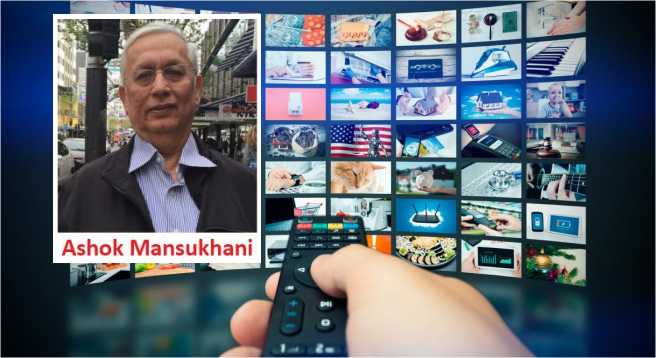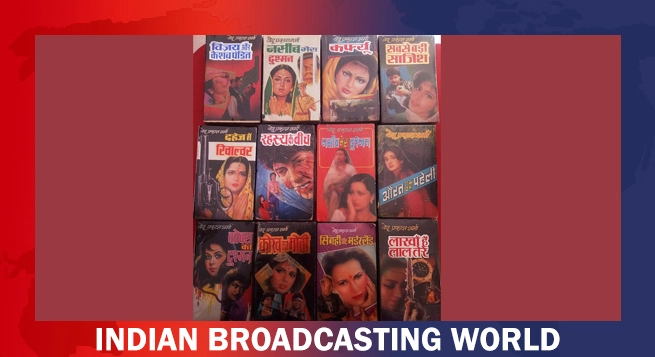-By Ashok Mansukhani:- Recently the Indian Government notified amendments in the Cable TV (Networks) Regulation Act, 1995 with the stated goal of updating it for a digital age and, in a way, levelling the field for all segments of the media, especially where self-regulatory regime is concerned.
Though the amendments focussed more on self-regulation by broadcasting community getting statutory recognition — as such bodies in advertsing or print medium have — there’s more to the amendments.
Let’s examine the fine prints.
Introduction
- The Supreme Court in the Ministry of Information & Broadcasting judgment reported in (1995) 2 SCC 161 Cricket Association of Bengal judgment had ruled those airwaves or frequencies are public property. Their use has to be controlled and regulated by a public authority in the interests of the public and to prevent the invasion of their rights. …. The Central Government shall take immediate steps to set up an independent, autonomous public authority representative of all sections and interests in society to control and regulate the use of airwaves. Para 124.
- In the past 26 years, efforts to bring a Broadcast Bill failed twice in 1997 and 2006, and the Convergence Bill of 2001 never got passed. As a result, broadcasters and news broadcasters finally set up their own self-regulatory bodies, which did not have statutory recognition under the Cable Television Network Actor the Cable Television Network Rules.
- The Indian Broadcaster Foundation (IBF) in 2008stated
- In the absence of an independent and autonomous regulatory body, the Broadcast Media stakeholders agree that it is the urgent need of the hour to expedite the implementation of a Self-Regulatory body-Broadcast Content Complaints Council(BCCC) to be set up and implemented by the IBF so that it functions as an independent, autonomous organisation, free from government intervention and free from the influence of any one or more organisations, private or otherwise, to provide an enabling environment to facilitate creativity, promote viewpoint diversity and the plurality of ideas.
- These Guidelines have been drafted to introduce greater specificity and detail to facilitate self-regulation by the broadcasting industry and minimise scope for subjective decision by regulatory authorities or the broadcasting service providers. However, the basic underlying principle of these Guidelines is the responsibility of complying with the provisions of the Certification Rules vests with the Broadcast Service Provider.
- The principles in these Guidelines are sought to be implemented at the first instance through a self-regulatory mechanism of the Broadcast Service Provider. Regulation by ‘forbearance,’ as present in the telecommunications industry, shall guide the Broadcasting Content Complaints Council (BCCC) whilst enforcing adherence by the BSP with the guidelines. Such self-regulatory mechanism shall be subject to a credible and time-bound default/grievance redressal mechanism, which shall function under the guidance of the BCCC.
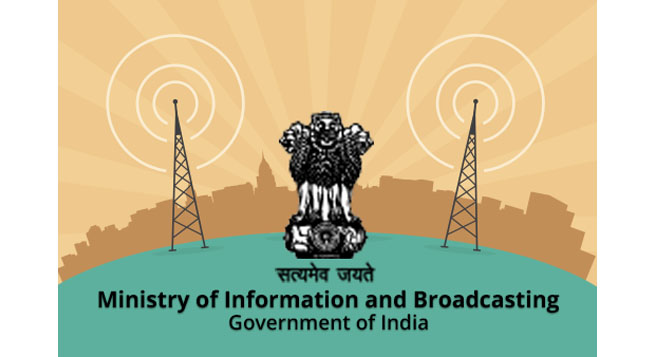
- The News Broadcasters Association set up a News Broadcasters Standards Authority in2008with the following objectives:
- The objects of the Authority shall be to lay down and foster high standards, ethics, and practices in news broadcasting, including entertaining and deciding complaints against or in respect of broadcasters as far as these relate to the content of any broadcast.
- In discharging its functions as aforesaid, the Authority shall act consistently with the following precepts:
- Maintaining and improving the standards of broadcast and maintaining the independence of broadcasters, television journalists and/or news agencies.
- Ensuring compliance by broadcasters, television journalists, and news agencies with the said persons’ Code of Conduct and adherence to high professional standards.
- Ensuring the maintenance of high standards of public taste and fostering a due sense of both the rights and responsibilities of citizens.
- Fostering and encouraging the growth of a sense of responsibility and public service among all those engaged in and associated with the profession of television journalism and business of broadcasting.
- Keeping under review and scrutiny any developments likely to or having the tendency to restrict the gathering, supply, and dissemination of news of public interest and importance.
- Such other aspects as may be incidental, consequential, related and/or otherwise materially concerned with the above precepts.
- The Authority shall perform its functions and exercise the powers vested in it under these Regulations in relation to, and upon, the Members and Associate Members of NBA or in relation to such other complaints or broadcasters and channels as may be referred to the Authority by the Ministry of Information & Broadcasting or other Ministry or other governmental body
- Another trade body, News Broadcasters Federation, was set up in 2020and created a Professional News Broadcasting Standards Organisation (PNBSO). Its objects are:
- The organisation will ensure that all the member channels follow the news broadcasting code of conduct aimed at improving and maintaining news broadcasting standards in India and curbing the menace of fake news.
- The PNBSO will entertain and decide on complaints against member channels when accused of unethical journalistic practices in broadcasting content.
On June 18,2021, NBF announced a merger with the Association of Regional Television Broadcasters (ARTBI). It claimed that they are now the largest broadcaster body. The press release stated: It would help regional news channels and their digital platforms to understand and comply with regulatory requirements. Furthermore, the move aims to strengthen the industry by building the Federation more democratic, diverse, and united in spirit, in the best interest of the news broadcasting industry and the public at large. ‘With this significant scale, the NBF will set new news standards and highest self-regulation and editorial standards,’ NBF’s president Arnab Goswami said. ARTBI founder Kartikeya Sharma expressed happiness over the move.
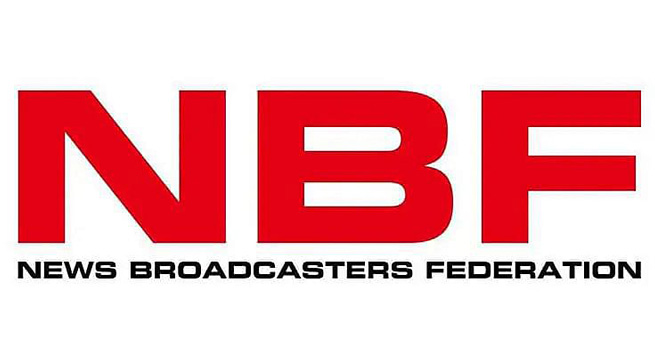
- The issue of non -statutory status of these self-regulatory bodies has been coming up recently in various court cases and judgments.
- a)In the judgment in WP(C) 387 of 2000 in the matter of “Common Cause Vs Union of India & Others dated 12.01.2017 reported in 2018, 13 SCC 440, the Supreme Court acknowledged that there is an existing mechanism for complaint redressal for viewers and stated in Para 10:
- Having given our thoughtful consideration to the submissions advanced at the hands of the learned counsel for the rival parties, we are satisfied in concluding that there is indeed an existing mechanism, as has been referred to by the learned counsel representing the Union of India. However, the above mechanism is not known to the general public. We are, therefore, of the view that the same needs adequate publication. We, therefore, hereby direct the Union of India to publish the mechanism, which has been brought to our notice and is partly extracted hereinabove. This would enable complainants to air their grievances before the appropriate forum and obtain a determination thereof at the concerned Competent Authority’s hands in the Ministry of Information and Broadcasting.
- b)In the pending case of Reepak Kansal vs UOI in Civil Writ Petition762/2020, the petitioner has sought direction from the Supreme Court to
- Constitute an Independent Authority known as India’s Broadcast Regulatory Authority to regulate and facilitate India’s broadcasting services and prevent the misuse of the airwaves by these electronic broadcasting channels in the name of media.
The Supreme Court has issued a notice on 07.08.2020.
- c)In the ongoing Supreme Court relating to Sudarshan TV – Firoz Iqbal Khan vs Union of India in Writ Petition Civil no 956/2020, the NBA filed an affidavit on 20.09.2020 requesting that its Code of Ethics be included under Rule 6of the Cable Television Network Rules by the Ministry of Information and Broadcasting to make the Ethics Code binding on all news broadcasters irrespective of whether they were members of the NBA or not. This affidavit was filed on a specific query from the Supreme Court on how the self-regulatory mechanism of the News Broadcasting Standards Authority could be made effective. The affidavit requested that the Court grant recognition to NBSA to become binding on all news broadcasters. The court recognition would also strengthen the body, and the penalties could be made more stringent.
- d)In the judgment of the Bombay High Court in the Nilesh Navalakha case in PILST 92252 /2020dated 01.2021on a batch of public interest litigation petitions filed by various parties charging the media with conducting (unwarranted) media trials, the Court heard all parties and focussed on whether self-regulation by existing industry bodies especially NBA was sufficient. In its judgment, the High Court strongly directed the UOI in Para 334as under:
- Hence, there is much substance in the contentions as urged on behalf of the Petitioners. We do not approve such abdication of substantive power conferred by the CTVN Act and the CTVN Rules by such authorities in favour of a voluntary organisation (private body), which is formed by the channels themselves, namely, the NBA and which has constituted the ‘NBSA.’ In view of our conclusion that matters which are pending investigation on a criminal complaint clearly fall within the restriction as contained in the Programme Code, contemplated under Section 5of the CTVN Act and Rule 6of the CTVN Rules, it would be a mandatory obligation of such authorities to immediately act upon the complaints received against the TV channels which are alleged to be violating the Programme Code or any other provisions of the CTVN Act and the CTVN Rules and take the necessary action as provided for thereunder. Such a regime is also recognised by the Up-linking and Down-linking guidelines. A clear statutory regime so prescribed cannot be permitted to be rendered nugatory and/or ineffective by an approach to refer the complaint to the self-regulatory Authority. Most significantly, the CTVN Act and the CTVN Rules do not recognise such a mechanism as adopted by the UOI and placed on record by Shri. Prem Chand, Under Secretary, MI&B. It would be in the teeth of the provisions of the CTVN Act and the CTVN Rules. It would amount to total non-implementation of the powers as otherwise conferred by such statutory provisions. The substantive statutory provisions, thus, cannot be rendered otiose by evolving a mechanism alien to the CTVN Act and the CTVN Rules. We, accordingly, direct that every complaint which would be made on the contents of any programme on any television channel, either to the authorised officer or the Central Government in regard to violation of the Programme Code, shall be dealt with in a manner as provided under the CTVN Act and immediate action be taken thereon, without the involvement of any private bodies like NBSA or NBF. This would be dehors any complaint made to these bodies or other such bodies, which would be dealt with by these bodies as per their self-regulatory mechanism.
There is no information yet available on whether the UOI (Union of India) or news broadcasters in the Supreme Court have challenged the judgment.
Self-Regulatory Status Granted to Broadcasters Bodies
- The Minister for Information and Broadcasting tweeted on 17.06.2021to state that the Government had amended the Cable Television Network Rules 1994to provide a three-layer statutory mechanism for the redressal of consumer complaints relating to the content broadcast TV channels. He stated in his tweet that “by amending the Cable Television Network Rules 1994, (has) developed a statutory mechanism to redress citizens grievances and complaints against programmes of TV channels. The @MIB India has also decided to recognise the statutory bodies of TV channels under CTN Rules.”
- The Press Information Bureau release explained the amendments to the Cable Rules on 17.06.2021as under:
- The Central Government today issued a notification amending the Cable Television Network Rules, 1994thereby providing a statutory mechanism for redressal of grievances/complaints of citizens relating to content broadcast by television channels in accordance with the provisions of the Cable Television Network Act, 1995.
- At present, there is an institutional mechanism by way of an Inter-Ministerial Committee to address grievances of citizens relating to violation of the Programme/Advertising Codes under the Rules. Similarly, various Broadcasters have also developed their internal self-regulatory mechanism for addressing grievances. However, a need was felt to lay down a statutory mechanism for strengthening the grievance redressal structure. Some Broadcasters had also requested for giving legal recognition to their associations/bodies. The Hon’ble Supreme Court, in its order in WP(C)No. 387 of 2000 in the matter of “Common Cause Vs Union of India & Others” while expressing satisfaction over the existing mechanism of grievance redressal set up by the Central Government, had advised to frame appropriate rules to for malise the complaint redressal mechanism.
- In the aforementioned background, the Cable Television Network Rules have been amended to provide for this statutory mechanism, which would be transparent and benefit the citizens. At the same time, self-regulating bodies of Broadcasters would be registered with the Central Government.
- At present, there are over 900 television channels that have been granted permission by the Ministry of Information and Broadcasting, all of which are required to comply with the Programme and Advertising Codelaid down under the Cable Television Network Rules. The above notification is significant as it paves the way for a strong institutional system for redressing grievances while placing accountability and responsibility on the Broadcasters and their self-regulating bodies.
Key Features of Cable TV (Amendment) Rules, 2021
The main amendments in the Cable Television Network Rules 2021are tabulated below:
- Prohibition of Programs
Rule 6 (7) Where the Central Government is satisfied that the programme of any channel is not in conformity with the Programme Code, it may, after giving an opportunity of hearing to the cable operator, and by an order in writing, prohibit the transmission or re-transmission of any such channel or programme in accordance with the provisions of Section 20of the Act.
Rule 7 (12)Where the Central Government is satisfied that the advertisement of any channel is not in conformity with the Advertising Code, it may, after giving an opportunity of hearing to the cable operator, and by an order in writing, prohibit the transmission or re-transmission of any such channel or programme in accordance with the provisions of Section 20of the Act.
Comments:
Though the PIB press note makes it clear that the object of the amendments of the Cable Rules is to pave the way for a strong institutional system for redressing grievances of viewers and placing accountability and responsibility in the broadcasters and their self-regulating bodies, there appears to be a drafting error as the notice of opportunity of hearing is stated to be the cable operator (not to a broadcaster which supplies the content and also sources the advertisements which form part of television programmes.
Notwithstanding this minor drafting error, this is the first significant step in making broadcasters and their self-regulating bodies to be responsive for ensuring complete conformity with the letter and spirit of the Programme code and the Advertisement code.
- Complaint Redressal Structure Rule 15
In the said Rules, after Rule 14, the following Rules shall be inserted, namely.
15.Complaint redressal structure–
(1) To ensure observance and adherence to the Programme Code and the Advertising Code by the Broadcaster and to address the grievance or complaint, if any, relating thereto, there shall be a three-level structure as under:
(i)Level I- A self-regulation by Broadcasters.
(ii) Level II – Self-regulation by the self-regulating bodies of the Broadcasters; and
(iii) Level III – Oversight mechanism by the Central Government.
Comments:
This three-tier structure brings the statutory nature of self-regulation for broadcasters to adhere to the Programme code and the Advertisement code on the same lines as has been made applicable to Digital Media in the amended Information Technology Rules of 2021dated February 25, 2021. The Government has kept in mind that the Indian Broadcasters Federation and the two News Bodies, the News Broadcasters Association, and the News Broadcasters Federation, are not fully representative of the 900 existing broadcast channels. Therefore, it will allow as many self-regulatory bodies as may be formed with a basic minimum number of at least 40 broadcasters.
Clarity will be required whether each broadcast channel will be treated as a single broadcaster, considering that there are already many broadcasts aggregator groups in India like Disney Hotstar/ Zee/Sony/Sun/ Times Group. This procedural issue will no doubt be speedily resolved soon.
Filing and processing of complaints (Rule 16)
(1) Any person aggrieved by the content of a programme of a channel as being not in conformity with the Programme Code or the Advertising Code may file his complaint in writing to the Broadcaster:
Provided that where such complaint relates to Advertising Code laid down by the Advertising Standards Council of India, such complaint may be addressed to the said Council and that Council shall deal with such complaint in accordance with the procedure laid down by it:
Provided further that Advertising Standards Council of India shall take a decision on the complaint within sixty days of its receipt and communicate the same to the Broadcaster and the complainant.
(2) The Broadcaster shall, within twenty-four hours of a complaint being filed, generate, and issue an acknowledgement to the complainant for his information and record.
(3) Every complaint shall be dealt with in the following manner, namely: –
(a) the Broadcaster shall dispose of the complaint and inform the complainant of its decision within fifteen days of receipt of such complaint.
(b) if the decision of the Broadcaster is not communicated to the complainant within the stipulated period of fifteen days, or if the complainant is not satisfied with the decision of the Broadcaster, he may prefer an appeal to the self-regulating body of which such Broadcaster is a member, within fifteen days there from.
(c) the self-regulating body shall dispose of the appeal within sixty days of receipt of an appeal and convey its decision in the form of guidance or advisory to the Broadcaster and inform the complainant of such decision within a period of fifteen days.
(d) where the complainant is not satisfied with the decision of the self-regulating body, he may, within fifteen days of such decision, prefer an appeal to the Central Government for its consideration under the Oversight Mechanism referred to in Rule 19.
Comments:
This procedure is based on clear timelines and gives sufficient time to the first two tiers: the Broadcaster and the self-regulatory body. No timeline is given to the third and most powerful tier, the Oversight Mechanism, set up by the Government.
Complaint Redressal Officer Rule 17
Self-Regulation by Broadcasters–
(1) A Broadcaster shall–
(i) Establish a grievance or complaint redressal mechanism and appoint an officer to deal with the complaints received by it.
(ii) Display the contact details related to its grievance redressal mechanism, the name and contact details of its Grievance officer at an appropriate place on its website or interface, as the case may be.
(iii) Ensure that such an officer takes a decision on every grievance or complaint received by it within fifteen days and communicate the same to the complainant within the stipulated time.
(iv) Be a member of a self-regulating body and abide by its terms and conditions.
(2) The Officer referred to in sub-rule (1)shall –
(i) Be the contact point for receiving any grievance or complaint relating to Programme Code and Advertising Code.
(ii) Act as the nodal point for interaction with the complainant, the self-regulating body, and the Central Government.
(3) The Broadcaster shall comply with every advisory, guidance, order, or direction issued under this rule by the self-regulating body or by the Central Government, as the case may be.
Comments:
In the Common Cause judgement of 2017WP(C)No. 387 of 2000 in “Common Cause Vs Union of India & Others dated 12.01.2017, the Supreme Court desired that self-regulatory mechanism was generally unknown to the viewer the Government should ensure sufficient publicity. The new system will go into effect in a couple of weeks. Therefore, in terms of Supreme Court directions, it would be necessary to do regular and sustained publicity in all forms of traditional and social media to enable millions of viewers to be made aware of the new statutorily recognised self-regulatory regime.
Constitution of Self- Regulating Body Rule 18
- 5. (1) There may be one or more self-regulatory body of Broadcasters, being an independent body constituted by the Broadcasters or its Association:
Provided that every such self-regulating body shall be constituted by a minimum of forty Broadcasters.
(2) Every self-regulating body referred to in sub-rule (1)shall be headed by a retired judge of the Supreme Court or of a High Court or an independent eminent person from the field of media, broadcasting, entertainment, child rights, human rights or such other relevant fields, and shall have other members, preferably not exceeding six, being independent experts in the field of media, broadcasting, entertainment, child rights, human rights and such other relevant fields.
(3)The self-regulating body shall, after its constitution in accordance with sub-Rule (2),register itself with the Central Government within a period of thirty days from the date of publication of these rules or within thirty days from the date of its constitution, whichever is earlier:
Provided that before granting registration to the self-regulating body, the Central Government shall satisfy itself that the self-regulating body has been constituted in accordance with sub-rule (2)and has agreed to perform the functions specified in sub-rules (4) and (5).
(4) The self-regulating body shall perform the following functions, namely: –
- i) oversee and ensure the alignment and adherence by the Broadcaster to the Programme Code and the Advertising Code.
- ii) provide guidance to the Broadcaster on various aspects of the Programme Code and the Advertising Code.
- iii) dispose of grievances which have not been disposed of by the Broadcaster within the specified period of fifteen days.
- iv) hear appeals filed by the complainant against the decision of the Broadcaster.
- v) issue such guidance or advisories to a Broadcaster, including those specified in sub-rule (5),for ensuring compliance to the Programme Code and the Advertising Code.
(5) A self-regulating body while disposing complaint or an appeal referred to in sub-rule (4)may issue the following guidance or advisories to the Broadcaster, namely: –
- i) advisory, warning, censure, admonish or reprimand; or
- ii) an apology to be telecast by the Broadcaster; or
- iii) include awarning card or a disclaimer; or
- iv) in case of any content where it is satisfied that there is a need for taking action to delete or modify content, refer it to the Central Government for the consideration of the Oversight Mechanism referred to in Rule 19for appropriate action.
(6) Where the self-regulating body is of the opinion that there is no violation of the Programme Code or the Advertising Code, it shall convey such decision to the complainant and the Broadcaster.
(7) Where the Broadcaster fails to comply with the guidance or advisory of the self-regulating body within the time specified in such guidance or advisory, the self-regulating body shall refer the matter to the Oversight Mechanism referred to in Rule 19within fifteen days of the expiry of the stipulated period.
Comments:
The allowance of multiple self-regulatory bodies of broadcasters (with a minimum of 40 broadcasters) is a welcome step considering that even news broadcasters have two separate bodies. Regional broadcasters are not part of IBF and will form their own body. The only stipulation that takes away from fully independent self-regulation is that Government reserves the right to satisfy itself that the registering body is constituted in terms of the specific subsection of Rules. Perhaps an affidavit would have sufficed, at least for existing self-regulatory bodies. After 13 years, it appears incongruent that IBF and NBA would have to register themselves with the Ministry of Information and Broadcasting.
6.Oversight Mechanism by Central Government (Rule 19)
Oversight Mechanism. –
(1) The Central Government shall coordinate and facilitate the adherence to the
Programme Code and the Advertising Code by the Broadcaster, develop an Oversight Mechanism, and perform the following functions, namely: –
- i) Publish a Charter for self-regulating bodies, including Codes of Practices for such bodies.
- (ii) Establish an Inter-Departmental Committee for hearing grievances or complaints.
- (iii) Refer to the Inter-Departmental Committeeg rievances or complaints arising out of the decision of the self-regulating body under Rule 17,or if no decision has been taken by the self-regulating body within the stipulated time, or on receipt of such other complaints or references relating to violation of Programme Code or Advertising Code as it may consider necessary.
- (iv) issue appropriate guidance and advisories to Broadcasters.
- (v) issue appropriate orders and directions to Broadcasters for maintenance and adherence to the Programme Code and the Advertising Code.
- (vi) act for non-compliance of its orders or directions and that of the self-regulating body.
Comments:
There is a welcome reference to the role of the Oversight Mechanism to function as a coordinator and facilitator. How this will work out in future remains to be seen. With the most vibrant Television network in the World, facilitation is the key. Nothing else will meet the test of freedom of expression under Article 19 (1) (a).
- 7. Formation of Inter-Departmental Committee Rule 20
Inter-Departmental Committee. –
(1)The Central Government shall constitute an Inter-Departmental
Committee, chaired by the Additional Secretary in the Ministry of Information and Broadcasting, and consisting of representatives from the Ministry of Women and Child Development, Ministry of Home Affairs, Ministry of Electronics and Information Technology, Ministry of External Affairs, Ministry of Defence, and representatives of such other Ministries and Organisations, including experts, as the Central Government may decide.
(2)The Inter-Departmental Committee shall devise its own procedure for hearing grievances or complaints.
(3)The Committee shall meet periodically and hear complaints regarding violation or contravention of the Programme Code and the Advertising Code that may –
- Arise out of appeal against the decisions taken at Level I or Level II, as the case may be, or where no such decision is taken within the specified time.
- Be referred to it by the Central Government.
(4) The Inter-Departmental Committee shall examine complaints or grievances received by it and make any of the following recommendations to the Central Government, namely: –
Advising, warning, censuring, admonishing, or reprimanding such Broadcaster; or
- requiring an apology of such Broadcaster; or
- requiring such Broadcaster to include a warning card or a disclaimer; or
- requiring such Broadcaster to delete or modify the content or take the channel or a programme off-air for a specified time period where it is satisfied that such action is warranted, for reasons to be recorded in writing.
(5)The Central Government may, after taking into consideration the recommendations of the Committee, issue appropriate orders and directions under sub-Section(3)of Section 20of the Act for compliance by the Broadcaster.
Comments:
The constitution of the Oversight Mechanism allows for a wide range of members, including ‘experts’ (left vague). Still, it does not amplify who these experts could be. There is a preponderance of government representatives, which dilutes the true spirit of self-regulation. Still, one can only hope that interventions by the Oversight Mechanism will be in the rarest of rare instances.
- 8. Full disclosure of complaint handling by Broadcaster or self-regulating body (Rule 21).
Disclosure of Information. –
(1) A self-regulating body and a Broadcaster shall make true and full
disclosure of all grievances or complaints received by it, the manner in which the complaints are disposed of the action taken on such complaints, the reply sent to the complainant, the orders or directions received by it and action taken on such orders or directions.
(2) The information referred to in sub-Section (1) shall be placed in the public domain and updated quarterly.
(3) Subject to any law for the time being in force, the Broadcaster shall preserve the record of the content telecast by it for a minimum period of ninety days and make it available to the self-regulating body or the Central Government, or any other Central Government agency as may be requisitioned by it.
Comments:
The first two tiers have been directed to put up quarterly updates. However, there is no such stipulation for the third and most important tier-the Oversight Mechanism. Hopefully, this will be remedied in future.
Conclusion
The amendments to the Cable Rules2021are a significant step forward in codifying the process to record viewers grievances and granting statutory recognition to self-regulatory bodies.
Still, it is mystifying that the amendments to the Cable Act amendments circulated in January 2020 (28 in number) are still pending to be placed for passage before Parliament.
The Cable Act 1995is outdated and needs to have been replaced by a comprehensive Electronic Media Regulatory Act. This is the need of the hour, but if there is hesitation, 26 years after a definitive Supreme Court verdict, then at least one hopes the salutary amendments proposed in January 2020Cable Act do get adopted during this year.
Meanwhile, it will be worthwhile to monitor the new self-regulatory regime introduced this week after a couple of months.
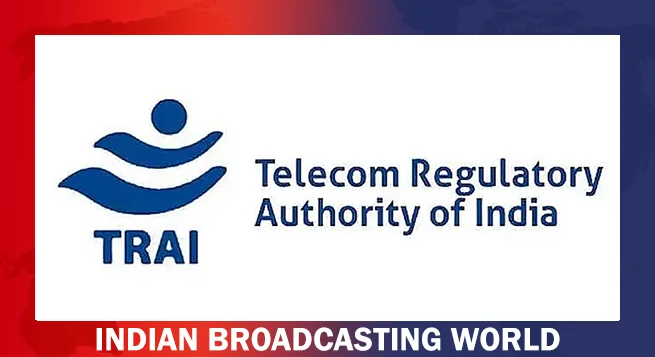 Trai suggests satcos pay 4% of revenue as spectrum charges
Trai suggests satcos pay 4% of revenue as spectrum charges 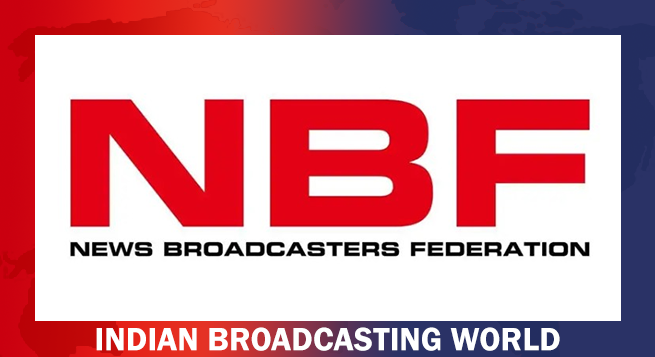 NBF issues another advisory to member TV news channels
NBF issues another advisory to member TV news channels  Govt directs OTT platforms to stop airing Pak content
Govt directs OTT platforms to stop airing Pak content 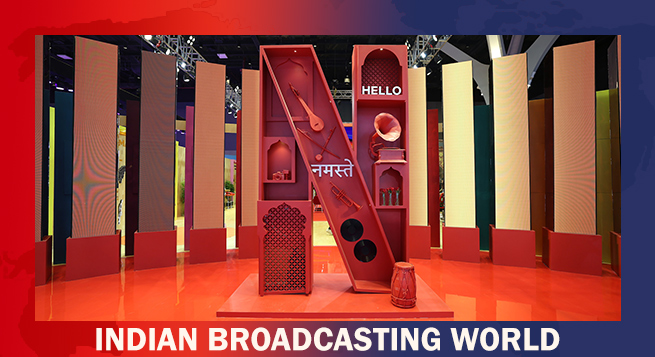 Netflix to have AI-powered iOS search in TV app revamp
Netflix to have AI-powered iOS search in TV app revamp  India sets up panel to review copyrights laws, AI disputes
India sets up panel to review copyrights laws, AI disputes 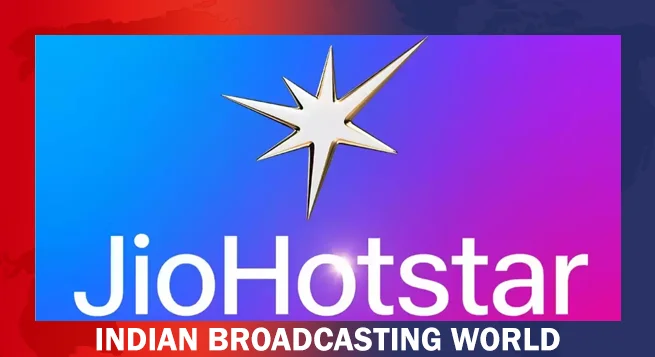 IPL suspension: JioStar says national interest top priority
IPL suspension: JioStar says national interest top priority 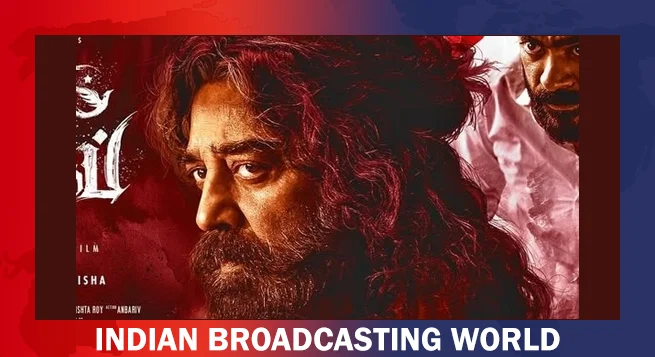 Kamal Haasan postpones ‘Thug Life’ audio launch
Kamal Haasan postpones ‘Thug Life’ audio launch 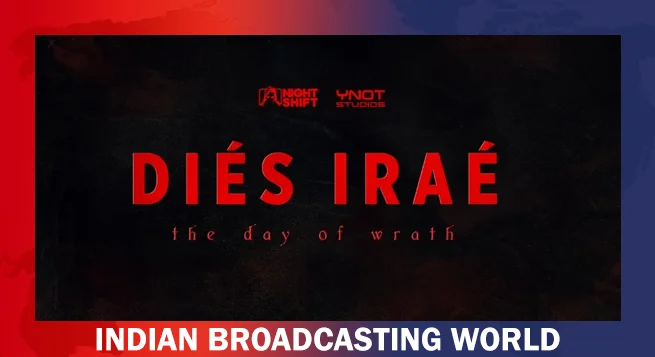 Pranav Mohanlal’s horror thriller titled ‘Dies Irae’
Pranav Mohanlal’s horror thriller titled ‘Dies Irae’ 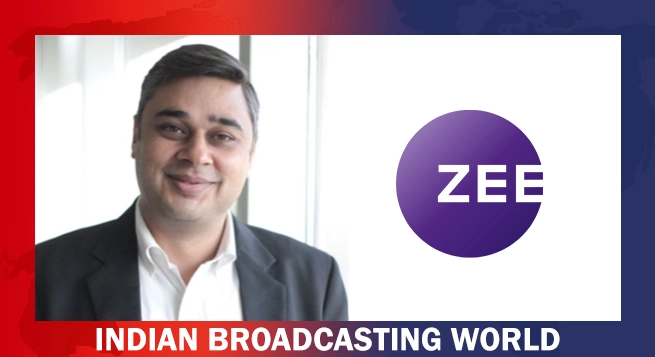 ZEEL appoints Rohit Suri as Chief Human Resource Officer
ZEEL appoints Rohit Suri as Chief Human Resource Officer 


